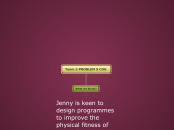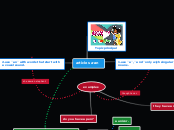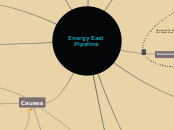Ranking system for Contributers
Tiers View Formula
Tiers should have a formla so the more contributers there are the more tiers exist. 2 to 4 tiers
In the begining tere will be just two tiers with top contrib on top and the rest on bottom
then as the number of contributors rise the pyramid begins to spread out
Determining How people are Sperated Out into tiers.....
Contribs = [Name:ContribItemValue]
1. Total Contribs = N
2. Contribs Two Tier = function(n) {
n.sort();
top = n[0];
bottom = n - top
}
3. Contribs 3 Tier = function(n) {
}
4. Contribs 4 Tier = function(n) {
}
Determine which tier to use based on the number of contribs...
N
4 Tiers
256 or more
5 % Top Tier
15%
50%
3 Tiers
9 to 256
10 % Top Tier
60%
2 Tiers
8 or less
Top Guy
The Rest
Scoring System for Contributors
Vouch Invalid
Vouched Valid
DIsproof
Claims (unlike article score) are scored per article that they belong to. That is: A persons claim score is formulated per article.
Total Claims Identified = N
Caims marked as Valid Claim = NVC
Claims marked as No Claim (invalid) = NIV
N + (NVC * 10) - (NIV * 10)
Number of Articles Upload = N
Number of Articles marked as Well Constructed = NWC
Number of Articles marked as Poorly Constructed = NPC
Number of Article marked as Jibberish or Spam = NJIB
Formula:
N + (NWC * 2) - (NPC * 2) - ( NJIB * 30 ) = Article Score for a Profile
Example 94 Contribs
John A
Badges Represent Certain Acomplishments for the particular item contributed or users general contribution to the site.
Greg S
Bob R
10 %
Jerry A
10%
30%
60 %
Spam Junk Filter
Jibberish Filter / Rating
Allow Public to flag article, claim, proof, or vouch as jibberish
Bot Filter
Account Proof of Human Test monthly
Proof / Disproof Viewing
Example Article
This is the article. One of these sentences may be highlighted and identified as a claim. Then an icon will appear behind the sentence. (C)
These icons can be clicked on to view the claim and subsequent proofs and disproofs.
Meta data will be displayed at the heading of the article.
Feed Back System
Vouch
Proof/Disproof
Is Not a Valid Claim
Is a Valid Claim
Negative
Spam
Poorly Contructed
Positive
Other
Proof Team
Top Contributer
People / Contributers
A people Icon on each main section (Articles, Claims, Proofs, Disproofs, Vouching) will allow users to see who the work horses are and give them recognition for their work.
Profiles will be public.
People can post as anon as to let people post up content without the possibility of getting smeared in real life.
Show Tiered Invalidators
Show Tiered Validators
Show Tiered DisProofers
Show Tiered Proofers
Show Tiered Claim Makers
Show Tiered Article Contributors
Flagable Items
Vouches
Proof / Disproof
Jibberish or Spam
Claim
A claim is a statement that says a truth about how the "world" works.
Not Claiming Anything
Well Contructed
Article / Text
An article is any text of any length. Max Length will be determined by the database max size of text.
Jibberish, or Spam
Poorly Constructed
No Claims
To Vague
Acceptable Construction
Well Constructed
Vouching System
Vouch as invalid Disproof
Vouch as Valid Disproof
Vouch as invalid Proof
Vouch as Valid Proof
Vote Up (I second this)
Comment (200 char limit)
Metadata
Credebility Rating?
Think hard about credebility Rating System FIrst
Common Ground Rating?
One Sided
Fiecly Debated
Invalidations
Validations
Total Claims
Total Disproofs On Claim
Total Proofs on Claim
Articles
Contributions
Hours Viewed
Total Number of Views
Disproof Team
John
View Filter System
Vouch Filter
Total vouches and their rank will be the default filter, higher rank and higher vouches will create a score and the highest scored will float to the top.
Metadata Filter
The meta data kept can be used to apply filters. The filters function will depend on the meta data kept.
Credebility Filter
Credability is a score on a users account. It is determined by....
Truth Seeker
Goals.
How it will accomplish theses goals.
Other ideas.
Technology Stack
Skill Sets Need
CHEF or Similar
Postgres
Command Line
Grunt or Gulp
GIT
Ruby
JQuery
Javascript
CSS
HTML
Frameworks
Rails 4 Api
Ionic / Angular
Website
Article Page
Article
Article Validity
Articals should have a validity interface that allows users to set it validity so that users can filter out articles that are giberish or severly un coherent.
Claims are full sentances or groups of sentances that can bee seen by users as being established as a claim.
Any logged in user can make a claim.
Claims can be catorgized by users and a valid claim or invalid claim.
Claims are identified by icons after the last sentance in the claim.
Once claims are clicked on or viewed that claims proofs and disproofs are displayed in the margins of the article.
Claim Validity
Metadata on Claim
Disproofs
Proofs
Links
Data Charts
Explanation
Metadata on Article
Total Claims
Total Proofs
Total Disproofs
Total Proof Level (calculation to be dertermined)
Total Disproof Level (calc to be determined)
Transparecy Truth Seeker Heros Page
Subtopic
Leana Wene
How To Page
Landing Page
My Articles
Recently Participated
List of All Articles Participated
Introduction
Pictograph Explanation
Paragraph Explanation
Youtube Video Explanation
Top 10
Popular Categories
Religion
Politics
Health
Most One Sided and Popular (Highest Proof to Disproof Ratio) and vice versa with a min view amount filter measured as a percentile rank of all articles uploaded.
Most Active by Proofs (Proofs + Disproofs per Time)
By Most Active by Claims (New Claims per Time)
By Most Viewed
Account Page
Validation System for Data
Incentive Trail
Explanation or measure of how much incentive a person is likly to have that persuades his or her judgement.
1. Financial Incentive
2. Education Background
3. Corporate tree.
4. ???
Profile Information
Reputation / Authority
Validation system is same as article proof / disproof or vouching
Account Settings
Article / Statement
Articles are any text that makes a claim about anything.
Any logged in user can upload an article for dissemination.
?Users will be able to mark any article as, 1. Well structured, 2. Acceptable, or 3. Gibberish
Users will identify and mark claims in the article by highlighting the claim. (sentence or multiple sentences).
Claims will be seen by users through icons after the sentence of which the claim ends much like citations.
Jscript will auto select full sentence(s).
Claims
Claims are statments made in the text that are claiming a fact about how the world is / works.
They can be one sentence or many.
Claims will be identified by the users.
Claims will be displayed by an icon after the last sentence in the claim.
When the Icon is clicked the claim or claims
(if multiple) will be highlighted and the user will have to pick one claim to view.
Once the claim is selected its proofs and disproofs will be viewable in detail.
Multiple claims ending on the same sentance will have a icon that indicates so.
?Claims them selves may have a filter system that lets the users filter out sentances or groups of sentances that are not claiming anything.
Perhaps Users will be able to mark claims as a 1. Valid Claim or 2. No claim made, Gibberish
Disproof
See notes on proofs
Explanation (1000 char Limit, 5x200 sections)
Proof
Proofs and Disproofs
Proofs and Disproofs will be ranked much like answers on stack overflow.
The algo has yet to be worked out but it will use the vouching system and the rank of the vouches.
Proofs will be augmented with data links, study links, explanations from the user, user created data charts, comments section for each proof/disproof.
Other things to include?
Explanation (1000 char limit, 5 x 200 char sections
Explanation of the proof/disproof.
Summary of study, data and reason why it is proof / disproof of the claim.
Forced format so that readers are not exausted by bad formatting or long winded explanations.
200char max, 50 char min sections, 5 section max.
Study Link
The user has the ability to post a link to a study from which his proof is derived.
Data Link
Link to data backing up the proof/disproof
Data Chart
User created data chart representing their proof.









